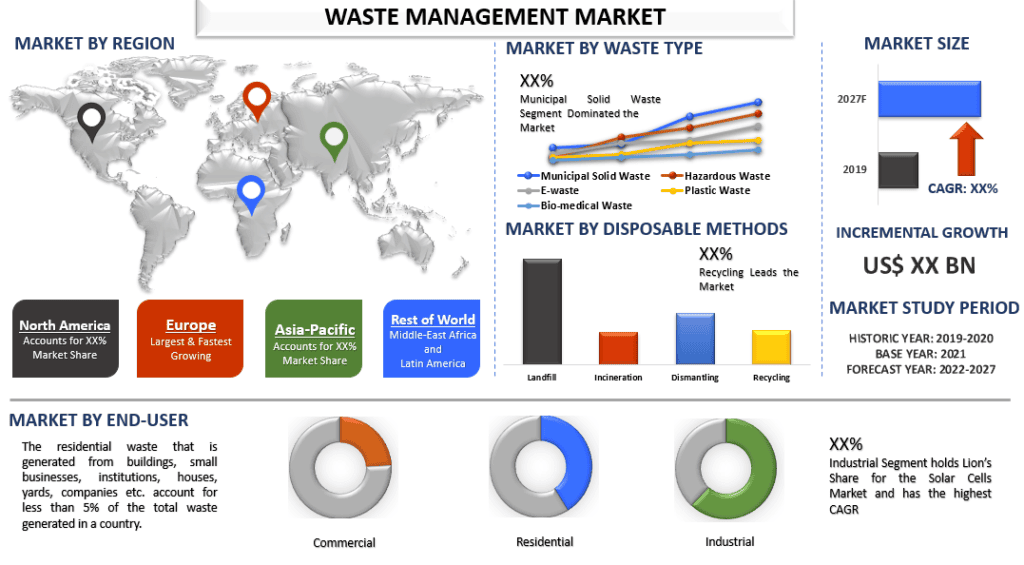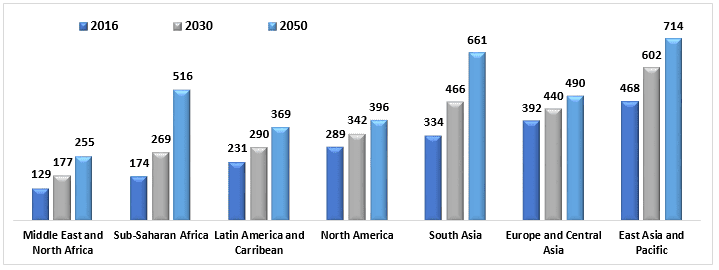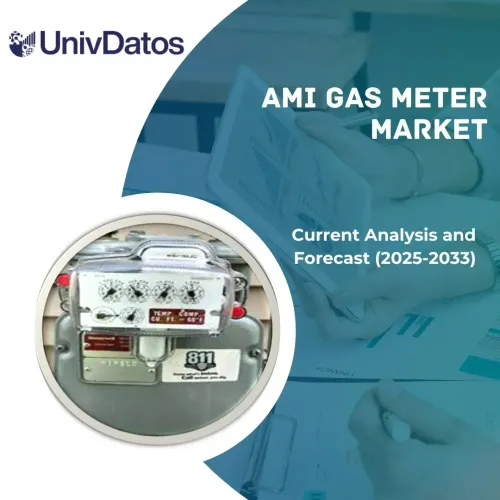- Home
- About Us
- Industry
- Services
- Reading
- Contact Us
Waste Management Market: Current Analysis and Forecast (2021-2027)
Emphasis on Waste Type (Municipal Solid Waste, Hazardous Waste, E-waste, Plastic Waste, Bio-medical Waste); Disposable Methods (Landfill, Incineration, Dismantling, Recycling); End-User (Residential, Commercial, Industrial); and Region/Country

Waste Management Market was valued at US$ 1.8 trillion in 2020 and is expected to grow at a CAGR of 5% over the forecast period (2021-2027). Waste Management is the process of collecting, treating, and disposing of waste products. Additionally, products can also be recycled and reused. Waste Management is one of the most important services that a city provides, in low income and many middle-income countries, waste management is the largest budget item in the cities and one of the largest employers. The management of solid waste usually fall completely in the purview of the local government. It is hard for a city to manage anything else if it cannot manage its waste properly. Poorly managed waste can have an enormous impact on the health, environment and economy of the city and its people. If the waste is improperly managed the downstream costs of its impact are higher than the cost of waste management in the first place. Improperly managed waste also contributes to GHG emissions like methane from the organic fraction of the waste stream and the increasingly global linkages of products, urban practices, and the recycling industry. Waste also pollutes the environment and can create unsanitary conditions. The environment pollution caused by not treated wastes can lead to the outbreak of vector borne diseases like rodents and insects. Solid waste management can lead to technical challenges and can pose a variety of social, economic, and administrative threats.
Key factors influencing the growth of the waste management market are the growing population around the world, industrialization in developing economies and increased awareness about waste management and recycling around the world. With the increasing population and rapid urbanization in most countries, the waste generated all over the world is increasing. The world generated 2.01 billion tons of solid waste in 2016, this number is expected to rise by 70% by 2050 producing 3.40 billion tons of waste in that year. All this waste needs to be properly treated to avoid pollution which can lead to health and economic problems. Additionally, the increased awareness about recycling and sustainability is also encouraging governments to invest in better waste management treatments. Effective waste management include segregating different types of waste and recycling as much of it as possible. This method however is costly and remains a challenge for many developing countries to be able to afford. Effective waste management usually comprises 20-50% of the total municipal budget. This may be the main constraint on the waste management market i.e., the affordability of effective waste treatment by low- and middle-income countries.
Projected Waste Generation, By Region (Millions of Tons/Year), 2016, 2030 and 2050

Biffa Plc, Clean Harbors, Inc., Covanta Holding Corporation, Daiseki Co., Ltd., Hitachi Zosen Corporation, Remondis Se & Co. Kg, Republic Services, Inc., Suez, Veolia Environment, and Waste Management Inc. are some of the prominent players operating in the Waste Management market. Several M&As along with partnerships have been undertaken by these players to facilitate customers with hi-tech and innovative products/technologies.
Insights Presented in the Report
“Amongst Waste Type, Municipal Solid Waste segment holds the major share”
Based on waste type, the waste management market is segmented into Municipal Solid Waste, Hazardous Waste, E-waste, Plastic Waste, and Bio-medical Waste. Amongst waste type, the Municipal Solid Waste segment of the market was valued at US$ XX million in 2020 and is likely to reach US$ XX million by 2027 growing at a CAGR of XX% from 2021-2027. Municipal solid waste (MSW) is trash or garbage and consists of everyday items that we use and throw away, like product packaging, furniture, glass clippings, food scraps, clothing, food scraps, appliances, newspapers, batteries, and paint. This usually comes from hospitals, schools, businesses, and homes.
“Amongst Disposable Methods, Recycling Segment holds the major share”
Based on Disposable Methods, the Waste Management market is segmented into Landfill, Incineration, Dismantling, and Recycling. Amongst disposable methods, recycling segment accounted for a market valuation of US$ XX million in 2020 and is expected to reach US$ XX million by the year 2027, at a CAGR of XX% over the analyzed period. Recycling is the reusing of used products like used clothing and functioning parts removed from used vehicles and material recycling which causes the recovery of raw materials from waste e.g., production of new glass from fragments, the melting of scrap iron and the production of recycled building materials from construction waste.
“Amongst End-User, Industrial Segment holds the major share”
Based on end-user, the waste management market is segmented into Residential, Commercial, and Industrial. The industrial segment generated revenue of US$ XX million in 2020 and is expected to grow at a CAGR of XX% during the forecast period to reach a market valuation of US$ XX million by 2027F. The residential waste that is generated from buildings, small businesses, institutions, houses, yards, companies etc. account for less than 5% of the total waste generated in a country. In most developed countries between 30-35% of the waste generated is from the industrial sector attributing to construction sites, demolition processes, renovation etc. according to EU statistical data.
“Europe represents one of the largest markets of Waste Management market”
For a better understanding of the market dynamics of the Waste Management market, a detailed analysis was conducted for different regions across the globe including North America (the U.S, Canada, and the Rest of North America), Europe (Germany, France, Italy, United Kingdom, Spain, and Rest of Europe), Asia-Pacific (China, Japan, India, Australia, and Rest of APAC) and Rest of the World. Europe dominated the market and grabbed around XX% market share owing to the growing urbanization in the region.
Reasons to buy this report:
- The study includes market sizing and forecasting analysis validated by authenticated key industry experts
- The report presents a quick review of overall industry performance at one glance
- The report covers an in-depth analysis of prominent industry peers with a primary focus on key business financials, product portfolio, expansion strategies, and recent developments
- Detailed examination of drivers, restraints, key trends, and opportunities prevailing in the industry
- The study comprehensively covers the market across different segments
- Deep dive regional level analysis of the industry
Customization Options:
Waste Management market can further be customized as per the requirement or any other market segment. Besides this, UMI understands that you may have your own business needs, hence feel free to connect with us to get a report that completely suits your requirements.
Table of Content
Analyzing the historical market, estimation of the current market, and forecasting the future market of the Waste Management market were the three major steps undertaken to create and analyze the adoption of Waste Management in major regions globally. Exhaustive secondary research was conducted to collect the historical market numbers and estimate the current market size. Secondly, to validate these insights, numerous findings and assumptions were taken into consideration. Moreover, exhaustive primary interviews were also conducted, with industry experts across the value chain of the Waste Management market. Post assumption and validation of market numbers through primary interviews, we employed a top-down/bottom-up approach to forecasting the complete market size. Thereafter, market breakdown and data triangulation methods were adopted to estimate and analyze the market size of segments and sub-segments the industry pertains to. Detailed methodology is explained below:
Analysis of Historical Market Size
Step 1: In-Depth Study of Secondary Sources:
Detail secondary study was conducted to obtain the historical market size of the Waste Management through company internal sources such as annual report & financial statements, performance presentations, press releases, etc., and external sources including journals, news & articles, government publications, competitor publications, sector reports, third-party database, and other credible publications.
Step 2: Market Segmentation:
After obtaining the historical market size of the Waste Management market, we conducted a detailed secondary analysis to gather historical market insights and share for different segments & sub-segments for major regions. Major segments included in the report as Waste Type, Disposable Methods and End-User. Further country-level analyses were conducted to evaluate the overall adoption of Waste Management in that region.
Step 3: Factor Analysis:
After acquiring the historical market size of different segments and sub-segments, we conducted a detailed factor analysis to estimate the current market size of Waste Management. Further, we conducted factor analysis using dependent and independent variables such as industrialization in developing countries and increasing rate of garbage generation over the years. A thorough analysis was conducted for demand and supply-side scenarios considering top partnerships, merger and acquisition, business expansion, and product launches in the Waste Management sector across the globe.
Current Market Size Estimate & Forecast
Current Market Sizing: Based on actionable insights from the above 3 steps, we arrived at the current market size, key players in the Waste Management market, and market shares of the segments. All the required percentage shares split, and market breakdowns were determined using the above-mentioned secondary approach and were verified through primary interviews.
Estimation & Forecasting: For market estimation and forecast, weights were assigned to different factors including drivers & trends, restraints, and opportunities available for the stakeholders. After analyzing these factors, relevant forecasting techniques i.e., top-down/bottom-up approach was applied to arrive at the market forecast about 2027 for different segments and subsegments across the major markets globally. The research methodology adopted to estimate the market size encompasses:
- The industry’s market size, in terms of value (US$) and the adoption rate of Waste Management across the major markets domestically
- All percentage shares, splits, and breakdowns of market segments and sub-segments
- Key players in the Waste Management market in terms of products offered. Also, the growth strategies adopted by these players to compete in the fast-growing market
Market Size and Share Validation
Primary Research: In-depth interviews were conducted with the Key Opinion Leaders (KOLs) including Top Level Executives (CXO/VPs, Sales Head, Marketing Head, Operational Head, and Regional Head, Country Head, etc.) across major regions. Primary research findings were then summarized, and statistical analysis was performed to prove the stated hypothesis. Inputs from primary research were consolidated with secondary findings, hence turning information into actionable insights.
Split of Primary Participants in Different Regions

Seek More Details About Research Methodology
Market Engineering
Data triangulation technique was employed to complete the overall market estimation and to arrive at precise statistical numbers of each segment and sub-segment of the Waste Management market. Data was split into several segments & sub-segments post studying various parameters and trends in the areas of type and their type of the Waste Management market.
The main objective of the Waste Management Market Study
The current & future market trends of Waste Management were pinpointed in the study. Investors can gain strategic insights to base their discretion for investments from the qualitative and quantitative analysis performed in the study. Current and future market trends were determined the overall attractiveness of the market at a regional level, providing a platform for the industrial participant to exploit the untapped market to benefit as a first-mover advantage. Other quantitative goals of the studies include:
- Analyze the current and forecast market size of Waste Management in terms of value (US$). Also, analyze the current and forecast market size of different segments and sub-segments
- Segments in the study include areas of type and their subtypes
- Define and analysis of the regulatory framework for the Waste Management industry
- Analyze the value chain involved with the presence of various intermediaries, along with analyzing customer and competitor behaviors of the industry
- Analyze the current and forecast market size of the Waste Management market for the major region
- Major regions studied in the report include North America (the U.S, Canada, and Rest of North America), Europe (Germany, United Kingdom, France, Spain, Italy, and Rest of Europe), Asia-Pacific (China, Japan, India, Australia, and Others), and the Rest of the World
- Company profiles of the Waste Management market and the growth strategies adopted by the market players to sustain in the fast-growing market
Deep dive regional level analysis of the industry
Related Reports
Customers who bought this item also bought










